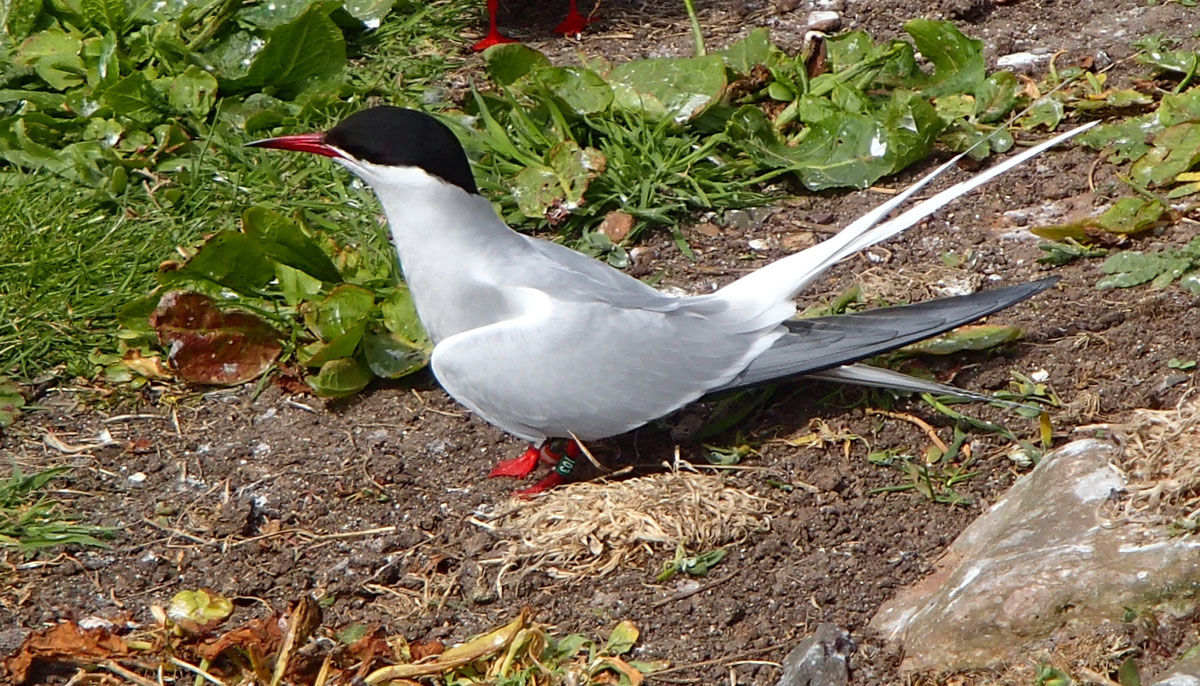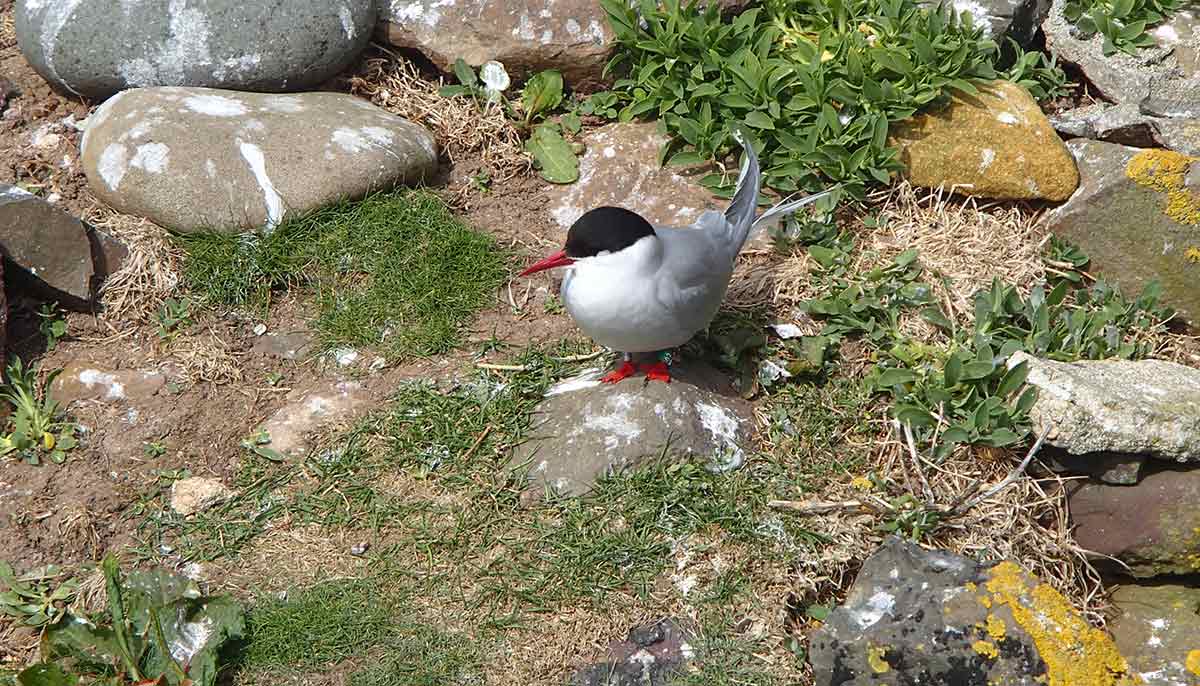Arctic Terns
Record-breaking bird migration revealed in new research
Published on: 7 June 2016
Electronic tags fitted to one of the world’s smallest seabirds have revealed record-breaking migration distances.
A study carried out by scientists at Newcastle University for BBC’s Springwatch has mapped for the first time the incredible annual migration of Arctic Terns from the Farne Islands on the Northumberland coast.
Weighing just 100g the Arctic Tern has the longest migration of any bird, travelling all the way to Antarctica for the winter and back to the Farnes, which are owned and managed by the National Trust, to breed in the Spring.
Last year 29 birds were fitted with geolocators by local researchers from Newcastle University watched by Springwatch presenter Nick Baker and National Trust rangers. The first of the Terns arrived back in the Farnes this spring.

Longest flight ever recorded
One bird was found to have made a 96,000km round trip between Northumberland and its winter home in the Weddell Sea, Antarctica.
This is the longest flight ever recorded for a migratory bird. The previous record was held by an Arctic Tern from the Netherlands, which had made a 91,000km round trip to its wintering grounds and back.
The researchers, Dr Richard Bevan and Dr Chris Redfern of Newcastle University will speak about the ground-breaking study on Springwatch this evening (Tuesday 7th June).
“It’s really quite humbling to see these tiny birds return when you consider the huge distances they’ve had to travel and how they’ve battled to survive,” says Dr Richard Bevan of Newcastle University’s School of Biology.
“So far we’ve managed to catch 16 of our tagged birds from last year and we’ve seen at least another four birds with our geolocators attached.
“We have been able to track our record breaking Arctic tern as it flew down the coast of West Africa, crossed into the Indian Ocean and eventually arrived in Antarctica.
“Further analysis of the data from these trackers will allow us to get a better understanding of how the Arctic Terns organise their migration and how global climate change may affect their routes.”
Mapping the route
More than two thousand pairs of Arctic Terns breed on the Farne Islands. Sitting two miles off the coast of Northumberland, the islands are home to 87,000 pairs of seabird, including Puffin, Eider Duck and Shag. The National Trust has cared for the Farne Islands since 1925.
Lana Blakely, National Trust Ranger on the Farne Islands, said: “Thousands of visitors flock to the Farnes every year to enjoy the remarkable wildlife. What our visitors don’t always see is the scientific work that our rangers have been doing behind the scenes for over four decades to monitor wildlife on the islands.”
Springwatch presenter Iolo Williams said: “Arctic Terns are delicate birds that have been bewitching Springwatch viewers for many years. We are delighted to be a part of this innovative research by Newcastle University with the National Trust.”
It will take some time to analyse all the data properly, but analysis of the data from the Arctic Tern covered by the Springwatch programme found that it had flown an estimated 96,000km (almost 60,000 miles) from its breeding grounds on the Farne Islands to its winter quarters in the Weddell Sea, Antarctica.
• The bird started its migration on 25/7/2015 reaching the tip of South Africa by 25/8/2015
• It then moved into the Indian Ocean where it spent nearly all of October (7/10/2015-31/10/2015; 1st staging area - 35.4 S, 71.9 E)
• After this it moved to its second staging area (60.6 S, 70.1 E) on the coast of Antarctica (3/11/2015 - 15/11/2015)
• It then slowly makes its way along the edge of the Antarctic continent until eventually ending up in the Weddell Sea (3/2/2016) where it stays until 23/3/2016 (3rd staging area - 69.6 S, 25.3 W)
• Finally, it moves up to the tip of South Africa (4/4/2016) and makes its way along the west coast of Africa and arrives in the Farne Islands' area 4/5/2015
This represents the longest distance ever recorded for any migratory bird.
The Farne Island tern travelled down the west coast of Africa before crossing over to the South Indian Ocean and finally arriving in Antarctica – four months after setting off from Northumberland.
Over its lifetime the record-breaking tern could be flying as far as 3 million km between the Farne Islands and Antarctica, the equivalent of nearly four trips to the moon and back.
“For a bird that weighs less than an iPhone, that’s an amazing feat,” says Dr Chris Redfern, one of the lead researchers.





